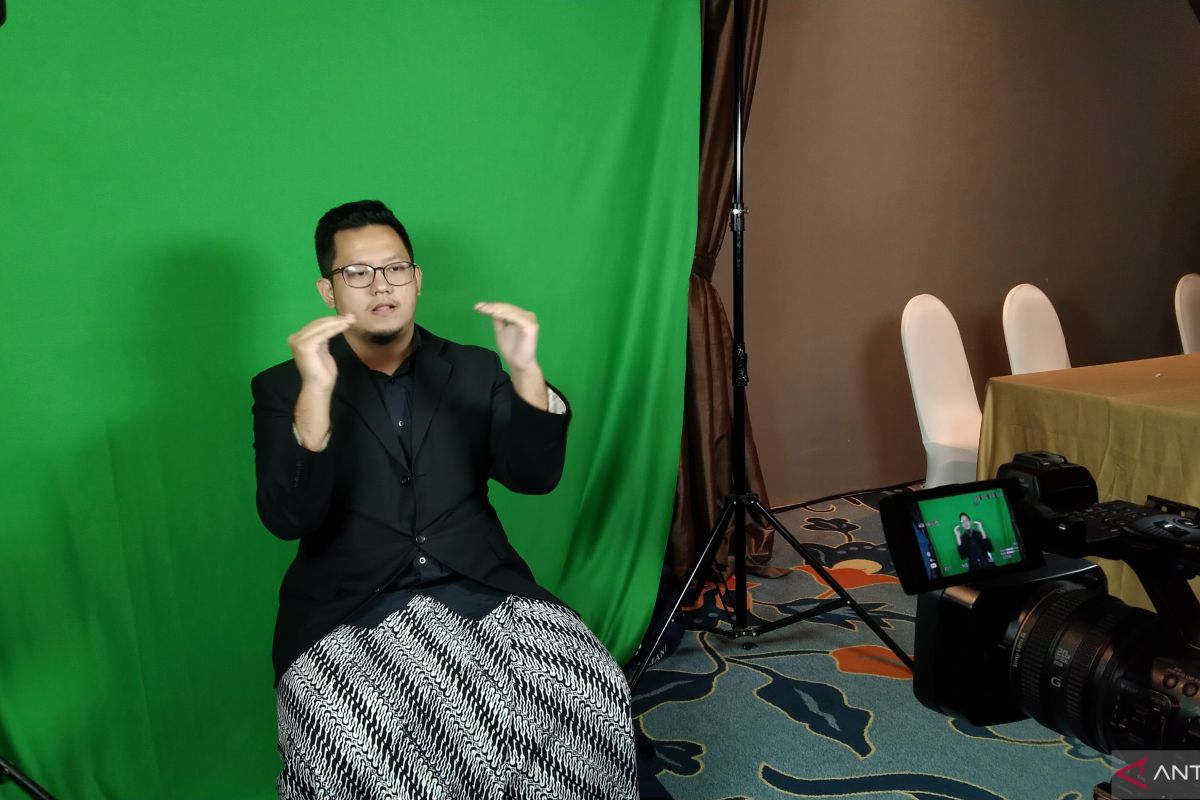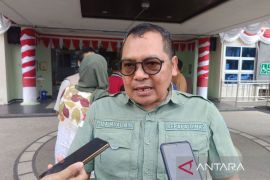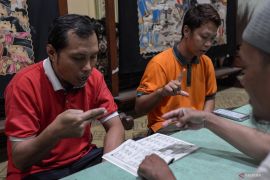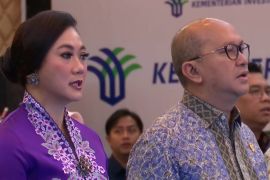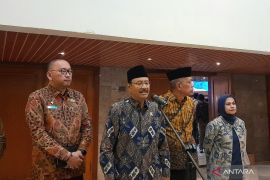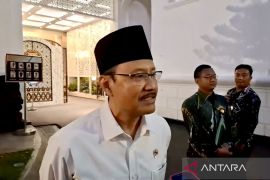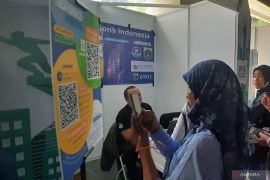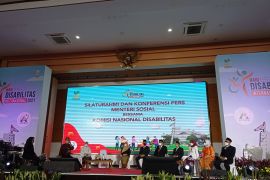He then turns his face, with the spotlight directed at him from two directions, to face the camera before starting to communicate through actions. Not long after, his hands nimbly start making signs, accompanied by his facial expressions and mouthing of words that he intends to express.
He is Andhika Pratama, the sign language interpreter for the deaf at the ASEAN Para Games.
The 24-year-old man has helped people with hearing impairment to understand what the speaker said during the press conference by simultaneously using sign language to communicate their words. His use of sign language could be seen during television broadcasts or on social media channels.
His role during the games is essential to ensure inclusivity for the deaf community, as he is the bridge between the speaker, who wants his or her message heard by all residents, to the deaf community that could rely only on visual cues to understand the message.
"My contribution is still small, but at least what we can enjoy could also be enjoyed by the deaf community to ensure equality between all of us,” Pratama stated after completing his task at the media centre.
Mingling with the deaf community
Pratama, a fresh graduate of Indonesian Literature from the University of Indonesia, has devoted his services to the deaf community since 2018.
Frequent interactions with the deaf and speech-impaired community helped him to know and learn about sign language until achieving sufficient mastery to become an interpreter.
Armed with his sign language ability, he then decided to apply as a sign language interpreter for the 2018 Asian Para Games in Jakarta. He is tasked with assisting deaf athletes scattered across various places and in need of assistance from sign language-literate volunteers.
Despite being nervous during his initial days, he successfully completed his duty during the games with assistance from senior sign language interpreters.
Following his feat at the Asian Para Games, he was then urged to become a sign language interpreter for various government functions, such as for the National Disaster Mitigation Agency (BNPB), and thereafter, for the 2021 National Paralympics Week in Papua and other events.
Even after the conclusion of the 2022 APG, another interpreting task in Padang, West Sumatra, awaits him.
Due to his frequent interactions with deaf friends, which demanded him to use sign language to communicate with them, Pratama sometimes forgets to switch to a spoken language while interacting with hearing partners that could leave them confused.
"One time when I ordered food, I accidentally gave my order in sign language. I only realized my mistake when the server was puzzled,” he recounted with a chuckle.
Through his long interactions with the deaf community, his spirit to help the community to understand messages and communication circulating around them has been emboldened.
The deaf community and people with no hearing problems live the same life, with only a slight difference in terms of the aspects of culture and lifestyle, he remarked.
Challenges in interpreting messages
Becoming a sign language interpreter is challenging and complicated. An interpreter like Pratama not only needs to comprehend sign language fluently but must also understand foreign words sometimes spoken by the speaker while presenting their remarks in Indonesian.
Only after hearing the speech input and through cognitive processing, the interpreter could translate the spoken word into sign language.
Pratama said that another challenge in sign language interpretation is the need to simultaneously use sign language while keeping up with the pace of utterances delivered by the speaker whose speech he interprets.
Messages must be conveyed uninterruptedly while the speaker does not give space to breathe, he added.
The interpreter said that the signs he produced had been formed by consensus among members of the deaf community. Hence, he could not create his own sign, lest confusion occurs due to the sign language he uses being incomprehensible.
He pointed out that in the case when the sign for a particular word is not agreed upon by members of the deaf community, such as the Indonesian sign language for “federation,” he is required to spell the word one letter at a time clearly.
Meanwhile, Secretary General of the Indonesian ASEAN Para Games Organising Committee (INASPOC) Rima Ferdianto affirmed that the organizer’s commitment to bolstering inclusivity for the disabled community is consistent with the spirit of the games as is reflected through the “Striving for Equality” slogan.
According to the National Social and Economy Survey data in 2019, some 9.7 percent of the total population belongs to the disabled community.
Moreover, some 7.03 percent of the population with disabilities in Indonesia are hearing-impaired, according to the Social Affairs Ministry’s Disability Management Information System data.
Pratama serving as a sign language interpreter for the games is part of APG’s commitment to realizing inclusivity and information openness for all sections of society, including the deaf community.
The commitment for information inclusivity during the games is also consistent with the right of information for people with disabilities ensured by the United Nations Convention on the Rights of Persons with Disabilities (UNCRPD) and Law No. 8 of 2016 on Disability.
Related news: Hearing aid supply fails to meet global needs: Health Ministry
Related news: Allow disabled people to develop independently: Gerkatin
Related news: 11th APG achievements preparation for Paris Paralympics: minister
Translator: Dewa Ketut SW, Nabil Ihsan
Editor: Sri Haryati
Copyright © ANTARA 2022
